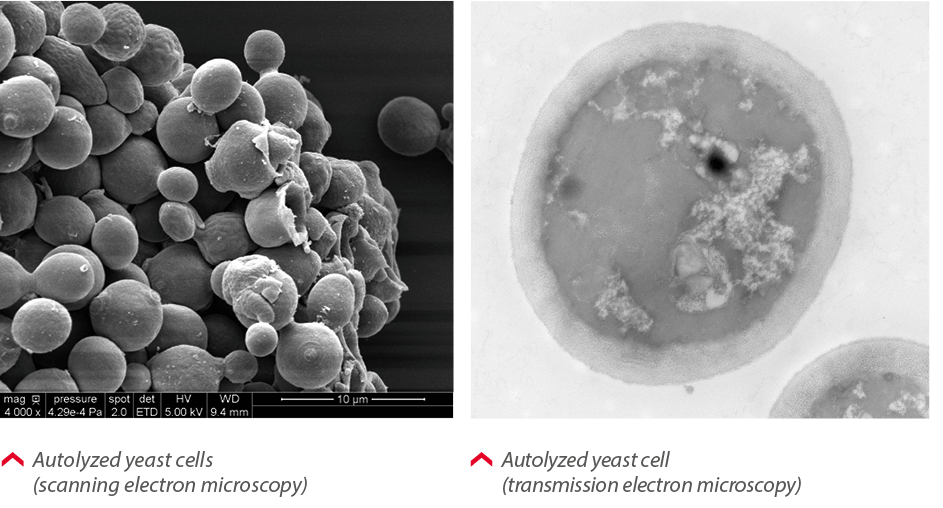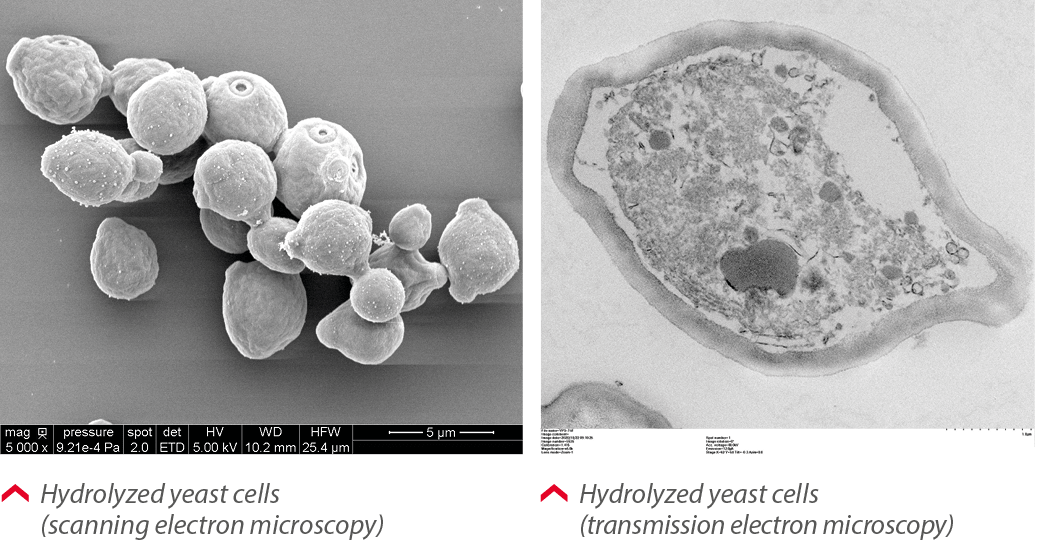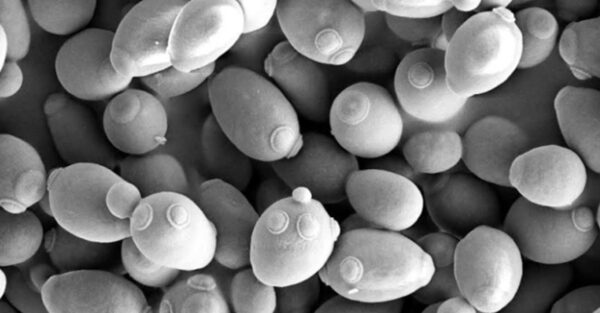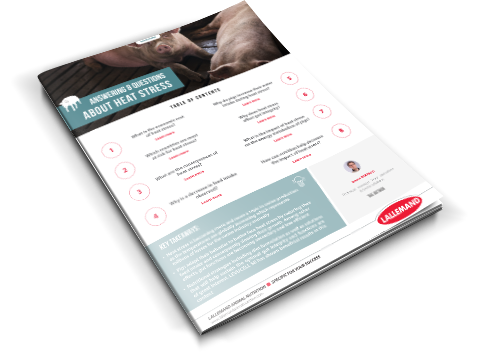Blog | Reading Time 4 minutes
Benefits of the different pure yeast products
Yeasts have been part of the human diet since at least ancient Egypt when they were already used to leaven bread and ferment wine. Their exceptional fermentative and nutritional properties also make yeasts valuable nutrients for animals. Yeasts can exert positive effects on animal health and well-being by stabilizing their intestinal flora and reinforcing immune modulation. Their use has recently been boosted by the growing demand for natural alternatives to treatments (e.g., antibiotics). Various types of feed ingredients containing yeasts in different forms have flooded the market. What differentiates them? What can they bring to animal nutrition and health?
What is yeast?
Yeasts are single-cell, eukaryotic microorganisms classified in the fungi kingdom. They are generally around 10μm in size, have a nuclear membrane, a cell wall, and a cytoplasmic content. Not all yeasts are equal. There are about 60 genera and about 1,500 species of yeasts. Only a few are used commercially. Thanks to its exceptional fermentative capacities and nutritional properties, Saccharomyces cerevisiae is the main yeast used in food, beverage, and baking as well as in animal nutrition.
Within this species, there are thousands of different strains, each with a unique genetic makeup, leading to different outcomes in terms of metabolisms and activities.
Each product used for a specific application in animal nutrition must be carefully selected for its desired outcome.
Live yeasts, or probiotics
Certain live yeasts are used as probiotics. Specific yeast strains will have unique effects on the target species. It is essential to ensure that the yeast remains alive and active from the feed production plant to the digestive tract of the animal. They can be used both in ruminants and monogastric livestock, as well as in aquaculture and pets.
They benefit digestive comfort and balance, resulting not only in improved feed efficiency and zootechnical performance but also in maintaining the health of the hosts. With the direct consequence of reducing the need for medicinal treatments such as antimicrobials.
In the European Union (EU), probiotic yeasts require prior authorization to be marketed (zootechnical additives).
Whole-cell inactivated yeasts
These are yeasts that have undergone an inactivation step. Depending on the process used (chemical, enzymatic, thermal), their properties and their application differ. The choice of strain, combined with the inactivation process, determines the properties and quality of the products.
We distinguish in particular:
- Autolysis: yeasts are digested by their own enzymes. Autolyzed yeasts are used in particular to improve the palatability of food and for their prebiotic effects.
- Hydrolysis: exogenous enzymes, selected according to the desired result, are added during the production process. A strictly controlled production process ensures consistent quality of finished products. Hydrolyzed yeasts are a valuable source of protein for animal feed.
Enriched inactivated yeasts
Yeast has the ability to incorporate trace minerals within its cells – making it ideal to produce mineral-enriched yeast biomass.
Selenium-enriched yeasts, for instance, represent an important source of organic selenium used in animal nutrition. During the fermentation process, selenium is added to the fermentation medium and S. cerevisiae can utilize inorganic selenium and incorporate it into the yeast proteins in the form of organic seleno-amino acids (such as selenomethionine and selenocysteine).
Animals fed a highly bioavailable source of organic selenium are able to maintain their antioxidant status during challenging situations, supporting their resistance to stress (e.g. during period of increased stress such as heat stress, weaning, transportation, etc.).
In the European Union (EU), organic selenium sources require prior authorization to be placed on the market (nutritional additives).
Yeast cell walls (YCW)
This is the insoluble fraction of autolyzed and/or hydrolyzed yeast, obtained after separation of the cytoplasmic contents. It is a source of mannan-oligosaccharides (MOS) and β-glucans. YCW products have four main modes of action that strongly depend on the production process and the strain background: 1) pathogen binding, 2) probiotic effect, as they favor the development of beneficial microorganisms 3) immune modulation 4) adsorption of certain mycotoxins. They help maintain digestive health and support growth performance.
Yeast extracts
This is the water-soluble fraction of the yeast cells, after separation of the YCW. They are used as a source of nutrients or as flavor enhancers. Rich in proteins (> 60%) and peptides, they contain a wide range of B vitamins and are a source of nucleotides.
Whole-cell inactivated yeasts, YCW, and yeast extracts are raw materials for animal feed and do not require prior authorization in the EU.
Conclusion
Yeasts represent a flexible and valuable source of functional and nutritional ingredients for animal nutrition. Each yeast product has its own characteristics and beneficial effects on animal growth performance and health, especially during challenging periods. It is essential to understand the differences between products to select the most appropriate ones regarding their potential roles and desired effects when added to animal feed.
For further information about the different pure yeast products, request our white paper here!
Published Apr 27, 2021 | Updated May 29, 2023







